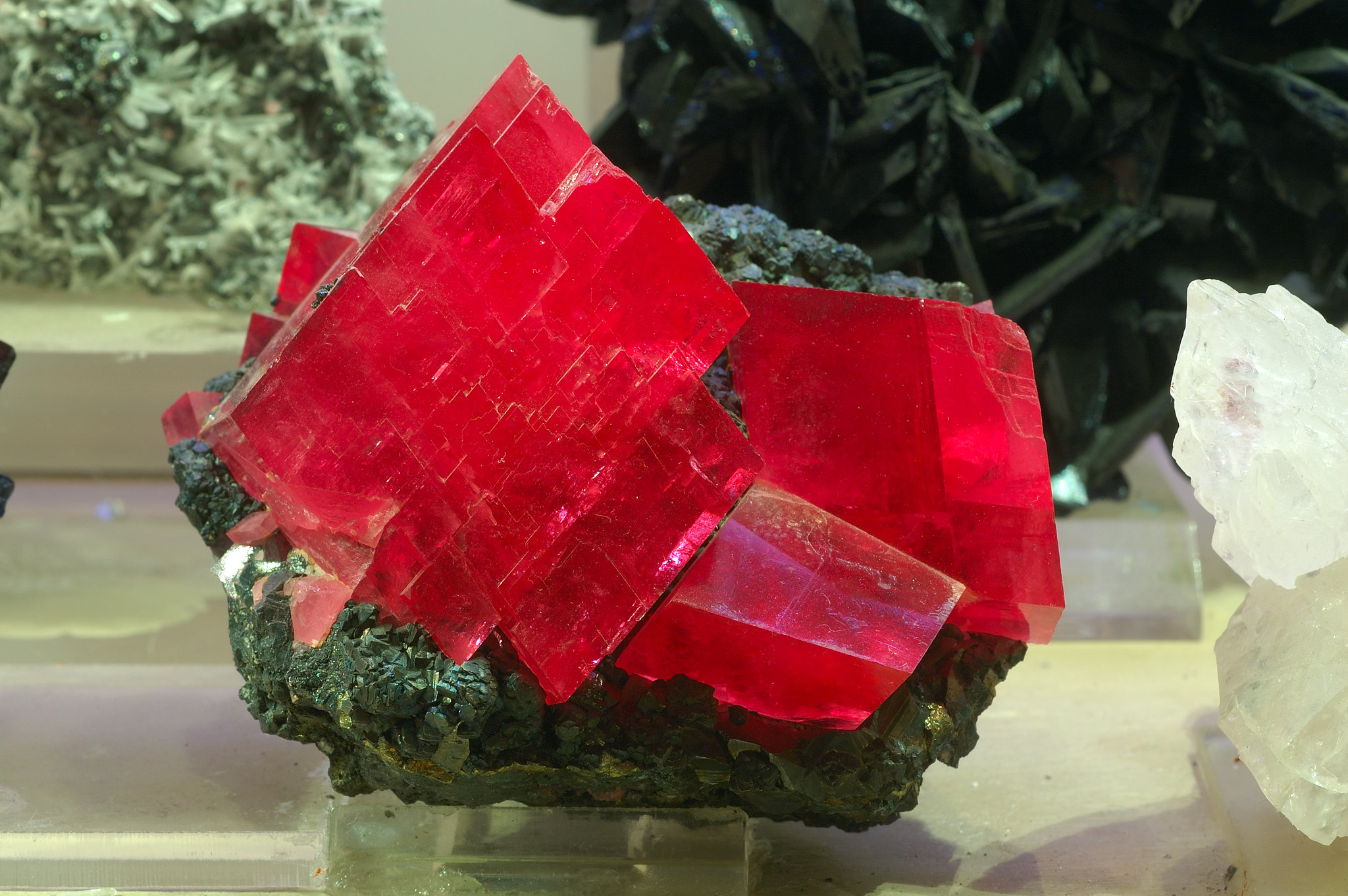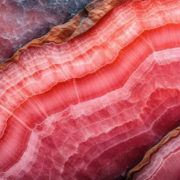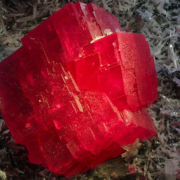Rhodochrosite: Properties, Uses and Virtues
The Short Version For Busy People
Rhodochrosite forms in manganese-rich environments via specific geological processes such as hydrothermalism. Its deposits are mainly found in South America, Europe and Asia. It is often found in massive form, rarely in transparent crystals. Metaphysically significant, it promotes emotional harmony.
Its varieties include single-crystal and massive rhodochrosite, offering a range of colors from pale pink to bright red. The stone is brittle (hardness of 4 on the Mohs scale), sensitive to acids and perfumes. Enhancement techniques can be used, but alter its natural purity. Synthetic versions and imitations also exist.
To preserve it, avoid shocks, use well-protected jewelry and gentle cleaning with lukewarm water and natural soap.

Rhodochrosite Geological Formation
Rhodochrosite, a member of the carbonate family, is mainly associated with geological environments rich in manganese minerals. Over time, specific geological conditions have favored the precipitation and crystallization of manganese carbonate, the main constituent of rhodochrosite.
Rhodochrosite deposits are often found in areas where hydrothermal or metamorphic processes have taken place. In these environments, hot mineral-laden fluids circulated through cracks and cavities in the rocks, gradually depositing rhodochrosite crystals.
Rough Rhodochrosite – Revealing its Natural Radiance
Rhodochrosite is rarely found as defined, transparent crystals and more abundantly in its massive form, i.e. composed of tightly-bound mineral grains without any distinct crystalline organization, translucent to opaque and often banded with white.
Sources – Rhodochrosite Worldwide Distribution
Rhodochrosite is found in many parts of the world, from South America to Europe and Asia. The most popular deposits of transparent or banded rhodochrosite are concentrated around Colorado, Peru, Argentina and South Africa.
Historical significance of Rhodochrosite
It is difficult to find factual, verifiable historical references to rhodochrosite. The earliest written mention I could find dates back to 1749, in a biochemistry study.
Its very low hardness and toughness may well have caused it to disappear from jewelry and objects of the period over time.
I’ll update this section as soon as I know more!
Metaphysical Properties of Rhodochrosite
Rhodochrosite is renowned for its metaphysical properties, which include harmonizing emotions and promoting inner peace. Examining its effects on mental and spiritual well-being helps us understand its appeal as a healing stone.
Rhodochrosite Varieties – Shades of Pink
Like pyrite, rhodochrosite has mineralogical varieties depending on its exact chemical composition. In gemmology, we focus on :
- Single-crystal rhodochrosite: transparent, pink to red, sometimes pinkish-orange to reddish-brown and facettable. Shows a crystalline structure.
- Massive rhodochrosite: Pink to red, translucent to opaque, often ribboned with white, sometimes resembling lace. No crystalline structure.
Rhodochrosite Colors – From Pink to Red
Rhodochrosite’s color palette ranges from pale pink to bright red, with darker shades such as red-brown and warmer shades such as pink-orange, both of which can be seen on transparent single crystals.
Durability and wearability of Rhodochrosite
Rhodochrosite is very fragile. With a hardness of 4 on the Mohs scale and perfect cleavage, it is very difficult to cut without breaking, which makes it a rarity on the jewelry market. It is also highly sensitive to acids and perfumes!
I would also advise against placing it in hot water or seawater, as it may dissolve!
I recommend my article on the strongest stones, in which I try to graphically explain cleavage and tenacity using doors and locks… and in this case, rhodochrosite is a door with all its locks aligned at the same angle!
Rhodochrosite Enhancements – Preserving its Natural Beauty
Certain enhancement techniques can be used to accentuate the stone’s color and durability, such as impregnating it with plastic or resin to fill cracks and protect its porous surface. These may yellow with age.
Rhodochrosite Synthetic – Replicating Nature in the Laboratory
Synthetic Rhodochrosite – Replicating Nature in the Laboratory It’s also possible to come across imitations.
Rhodochrosite Imitations – Recognizing the Genuine
It is possible to find imitations such as tinted calcite, as rhodochrosite belongs to the same family.
Rhodochrosite care – Preserving its natural beauty
To preserve the beauty of rhodochrosite, proper care is essential. At all costs, avoid open jewelry, which does not effectively protect the edges of the stone and leaves them vulnerable to impact. Wear your perfumes and lotions and let them dry thoroughly before putting on your jewelry.
For cleaning, avoid ultrasonic and mechanical cleaning, which could damage the stone irreparably, and opt for a soft cloth, a little lukewarm water and the most natural soap possible.




Leave a Reply
Want to join the discussion?Feel free to contribute!